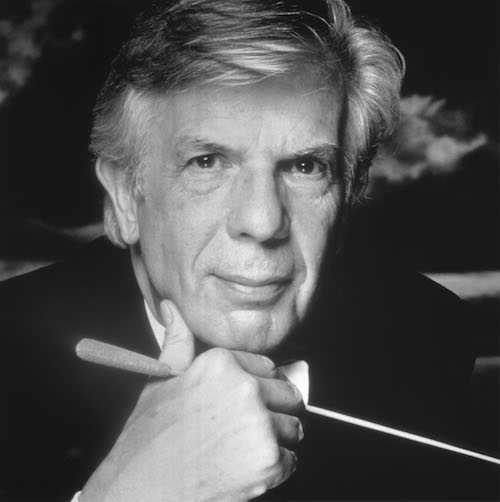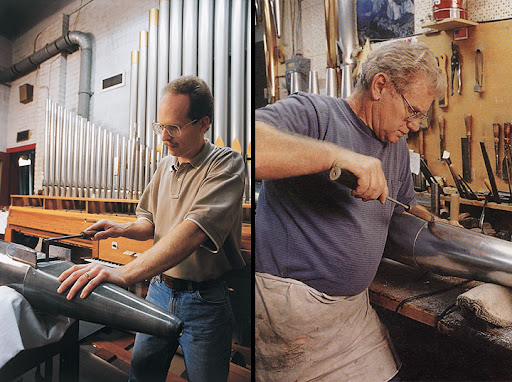by Jarrett Hoffman

•Bop Stop names next director
•Books about saxophone and bomba by local musicians and authors
•Almanac: Christoph von Dohnányi, the “Szell Shell,” and a problem with the organ
NEWS AT THE BOP STOP:
With Gabe Pollack leaving to become Director of Performing Arts at the Cleveland Museum of Art in October, the Bop Stop has announced that Bryan Kennard (pictured) will be its next director.
A native of Cleveland, and a familiar face both in the audience and on the stage of the Bop Stop, Kennard holds a bachelor’s degree from Mercyhurst University (Music Education), master’s degrees from Youngstown State University and the University of Texas at Austin (Flute Performance, Jazz Composition), and a doctoral degree from the University of Miami’s Frost School of Music (Jazz Composition with a cognate in Music Technology).
“Bryan’s knowledge of jazz performance, education, the local music scene, and music technology will be invaluable to the success of BOP STOP,” the venue writes on Facebook. Read more about him on his website, and view the venue’s September concert schedule here.
TWO BOOKS:
Dana School of Music professor of saxophone James Umble has published the second edition of his book Jean-Marie Londeix, Master of the Modern Saxophone, an update on the original version published in 2000. The book centers around Londeix, that famed concert saxophonist and pedagogue who taught at the Conservatoire de Bordeaux, where Umble studied with him. Among its contents are descriptions of Londeix’s teaching concepts, his influences, and his opinions on important pieces in the concert saxophone repertoire.
And author Raquel M. Ortiz, who is based in Lorain and New York City, recently visited the Julia de Burgos Cultural Arts Center to give a reading of her picture book When Julia Danced Bomba / Cuando Julia bailaba bomba. But first, with the help of a cadre of musicians both experienced and inexperienced, she teaches the audience about bomba — that Afro-Puerto Rican style of music and dance — including its key instruments, rhythms, and techniques. Watch here.
TODAY’S ALMANAC:

One of the big emphases of his tenure was international touring, which included performances at the Salzburg and Edinburgh Festivals, and the Orchestra’s first concert in mainland China. As for recording, the Orchestra’s large output during this time included the complete symphonies of Beethoven, Brahms, and Schumann.
Because today also marks anniversaries for Antonín Dvořák (born on September 8, 1841) and Richard Strauss (died on this date in 1949), let’s hear their music through the motions of Dohnányi’s baton. Listen to Dvořák’s Symphonies Nos. 6-9 in a YouTube playlist, and head to Spotify for an album that pairs Strauss’s Ein Heldenleben with Till Eulenspiegels lustige Streiche.
Two other important events during his tenure: the founding of the Cleveland Orchestra Youth Orchestra and Youth Chorus, and the $36 million renovation of Severance Hall from 1998 to 2000. That included a new shell that retained the famous acoustic qualities of the so-called “Szell Shell” — perhaps also moving to a warmer and less bright sound, some say — and that better matched the hall’s art deco aesthetic.
But the Szell iteration had another, bigger problem — an internal organ problem, to put it medically. In the words of the firm behind the renovation, David M. Schwartz Architects,
The installation of the 1958 ‘Szell Shell’ also made the critical mistake of entombing — and thus rendering useless — the hall’s 6,025-pipe E.M. Skinner organ.
Indeed the instrument often had to be amplified with speakers. One part of the solution: a newly-constructed space behind the stage to house the organ chambers. Another part: the facade of the new stage design allowed the organ’s sound to project easily into the hall, as Kate Rogers describes in a story for the Cleveland Orchestra Archives.
Plus, the instrument underwent an extensive restoration by the Schantz Organ Company in Orrville. (Below, from the Orchestra’s Archives: restoration of the organ pipes, left, and construction of the new facade pipes, right.)
The result: an instrument regarded as one of the top concert hall organs on the continent. As Rogers puts it, “this ‘king of instruments’ has found its voice.”
So let’s conclude with music from The Cleveland Orchestra’s album A New Century, Vol. 3, namely the world premiere recording of Bernd Richard Deutsch’s Okeanos, a concerto for organ and orchestra featuring Paul Jacobs as soloist. Here’s the third movement, full of sonic and emotional power — “king of instruments” indeed.





